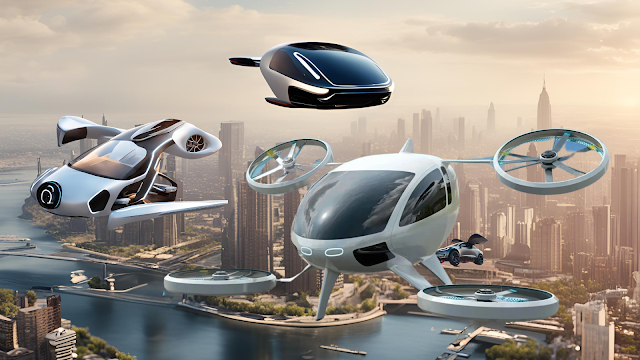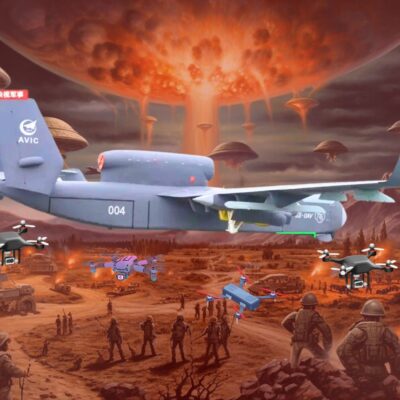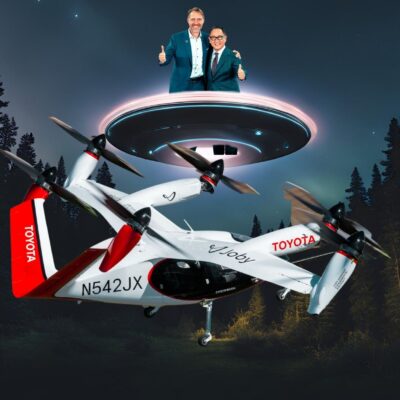Someone once said that “the trouble with flying cars is that they sometimes collide with reality.” That statement may have been true for the longest time. But now it’s not! We’re in the age of flying cars!
Once in a while, most of us have been stuck in a frustrating traffic jam and don’t we wish we could simply fly over all the congestion? Well, now the Electric vertical take-off and landing (eVTOL) vehicles are the dream come true- almost!
These innovative flying EVs and planes could completely change how we get around by taking to the skies and soaring overcrowded streets and highways.
What are Flying EVs?
Decades ago, “The Jetsons” introduced us to a whimsical world of futuristic technology, where flying cars and robotic assistants were commonplace. The silver screen has somehow always
shown us some bits of the future. Fast forward to today, advancements in automotive technology are bringing us closer to the futuristic vision depicted in the beloved cartoon series. There’s also something in the grapevine about Musk working on robotic maids!
Flying EVs, also called eVTOLs, are electric vehicles that can take off and land vertically, similar to helicopters. They use multiple electric motors to spin rotors or propellers that provide vertical
lift. They never require a runway. Flying EVs and crafts are designed to be able to land and take off from relatively small spaces, not requiring a long runway. Some major companies working on developing these eVTOLs include Joby Aviation, Archer Aviation, Lilium, and EHang.
Example of Development
Joby Aviation
On Sep 25, 2023, the American firm announced that they had delivered an electric vertical take-off and landing to Edwards Air Force Base. According To Joby Aviation, this delivery was six months ahead of its 2024 delivery. Flying cars are already here with us!
Joby Aviation is one of the leading companies pioneering flying EV technology. Their eVTOL design is a sleek, futuristic aircraft that can carry up to five passengers. It uses six tilting electric motors and propellers to generate vertical lift for take-off and landing. But once Joby’s vehicle transitions to
horizontal flight, the motors tilt forward to provide regular winged flight like an airplane. This allows it to fly efficiently at high speeds for longer distances. With a range of 150 miles and a top cruising speed of 200 mph, Joby’s eVTOL is designed for short regional trips and urban air taxi services. The company has already successfully tested prototypes and plans to officially launch an air mobility service using these flying EVs by 2024.
Archer Aviation
The company began its journey on May 21, 2020, with its facility located near the Palo Alto Airport in the San Francisco Bay Area, USA. Archer, with a vision to transform urban air mobility, secured an impressive $1.1 billion (USD) in funding by January 4, 2023.
Archer’s Midnight five-seat eVTOL production aircraft boasts the capability to transport four passengers and one pilot up to 60 miles at speeds of up to 150 mph. Well, 60 miles might sound little, but everything starts somewhere.
The aircraft boasts 12 electric propellers for efficient flight, and the design prioritizes passenger safety and minimal noise. Initially, Archer plans to target congested urban areas, eventually expanding to create a comprehensive air taxi network. Backed by investors like Marc Lore, Archer aims to revolutionize urban transportation by making it affordable, safe, and sustainable.
Learn More: Formula 1 Tech Gives Honda’s Electric Vehicles a Competitive Edge
Lilium
Perhaps the Lilium Jet is the best representation of German engineering when it comes to eVTOL. The German startup founded in 2015 by aerospace engineers from the Technical University of Munich, is developing a revolutionary seven-seater electric vertical takeoff and landing (eVTOL) aircraft known as the Lilium Jet. Initially supported by funding from the European Space Agency and the European Union’s Climate-KIC program, the company raised over $100 million in 2017 and achieved “unicorn” status in
2020.
Lilium Jet is designed for simplicity and aims to minimize complexity to lower manufacturing and maintenance costs while enhancing safety and efficiency. With no folding propellers or wings, tail,
rudder, gearboxes, or single points of failure, the aircraft promises a quiet, reliable, and affordable urban air mobility solution.
Lilium plans to establish a network of vertiports globally and start commercial operations by the end of 2024. Still in doubt that the future of transportation is here with us?
EHang
On 9th May 2024, the Chinese leading air taxi developer announced they had made maiden flights in the United Arab Emirates. This is in an attempt to expand into the Middle Eastern market when air taxis
become mainstream.
EHand also recently acquired a “Production Certificate” from the Civil Aviation Administration of China (CAAC). According to the Guangzhou-based eVTOL and UAM company, securing the certificate means
that they meet the CAAC’s airworthiness regulatory requirements for mass production.
However, EHang was not the only one to carry out the autonomous passenger-carrying demo flight in Abu Dhabi. AutoFlight, another Chinese eVTOL maker, successfully tested a larger two-tonne class
aircraft.
Potential Applications
Slow traffic has been an issue in many urban areas. So, one of the most significant uses of flying
cars is air taxi services to transport people around urban areas. Imagine simply ordering an air taxi to pick you up and fly you across a congested city. This could revolutionize urban mobility by providing a much faster way to get around cities.
Flying EVs could also be incredibly useful for emergency response situations. They could quickly transport critically injured patients or emergency personnel to hard-to-reach locations. For search and
rescue operations, eVTOLs could aid in getting teams deployed rapidly to remote areas in the aftermath of natural disasters.
Another important use would be for cargo transportation and deliveries. Companies could use fleets of unmanned flying cargo EVs to ship packages and goods across cities or to rural areas not
accessible by ground transportation.
On an individual level, some of us envision a future where we can have our own personal flying EV, just like we own cars today, to get around in our daily lives. Don’t you?
Learn More: The World’s Largest Electric Container Ship: What Are Its Benefits and Challenges?
Challenges and Concerns
While the potential of flying EVs is exciting, there are still many challenges to overcome. One of the biggest is around regulations and air traffic control. Currently, there are no systems or rules in place to
manage fleets of low-altitude flying cars operating in cities and residential areas. Air traffic control systems would need major upgrades to safely integrate this new form of transportation.
There are also infrastructure challenges. Cities would require places for eVTOLs to take off and land, like specialized vertipads or vertiports. Overcoming limited battery technology is another hurdle, as current batteries would only allow for relatively short flight ranges of most eVTOL designs.
There’s also the issue of public acceptance and concerns over noise pollution are added issues. While flying EVs aim to be quieter than regular aircraft, the idea of numerous vehicles taking off and
landing around urban neighborhoods raises noise complaints. Some are also skeptical about the safety and feasibility of this new technology.
Future Outlook
If the technical and regulatory challenges can be worked out, eVTOLs could dramatically improve traffic congestion and transportation accessibility in cities around the world.
The immense potential has attracted billions of dollars in investment from major companies like Hyundai, Toyota, and Uber who are all working on flying EV projects. Aviation giants like Boeing are also getting involved. With such intense interest and funding, it’s only a matter of time before this technology progresses from a futuristic concept to an actual transportation service available to the public.
As the world looks for new ways to address traffic gridlock, poor urban mobility, and environmental sustainability, flying EVs could provide a compelling solution unlike anything seen before. The future of how we get around could soon be taking shape in the skies above us!











The World’s Largest Electric Container Ship: What Are Its Benefits and Challenges?
Formula 1 Tech Gives Honda's Electric Vehicles a Competitive Edge